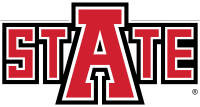Date of Award
8-13-2020
Document Type
Thesis
Degree Name
Computer Science, MS
First Advisor
Jeff Jenness
Committee Members
Dalmo Vieira; Hai Jiang; Jason Causey; Jeff Jenness
Call Number
LD 251 .A566t 2020 S56
Abstract
Machine learning was combined with RUSLE2 erosion prediction technology to quickly estimate soil erosion by water over large areas. The new modeling framework combines efficient geoprocessing and machine learning techniques to allow the application of the RUSLE2 model to entire watersheds while maintaining high spatial resolution that consider actual overland flow paths, drainage networks, soil properties, and land use. The methodology uses topographic information from LiDAR digital elevation models, soil maps from SSURGO, spatial crop data from USDA NASS, and RUSLE2 databases describing climate and agricultural operations. New geoprocessing algorithms define hillslopes and extract topographic, soil, and crop properties. A trained regression model using an artificial network uses that information to estimate annual average soil loss backed by RUSLE2-calculated erosion data.
Rights Management

This work is licensed under a Creative Commons Attribution-NonCommercial-No Derivative Works 4.0 International License.
Recommended Citation
Sims, Brandon W., "A Smart Soil Loss Estimator" (2020). Student Theses and Dissertations. 375.
https://arch.astate.edu/all-etd/375

